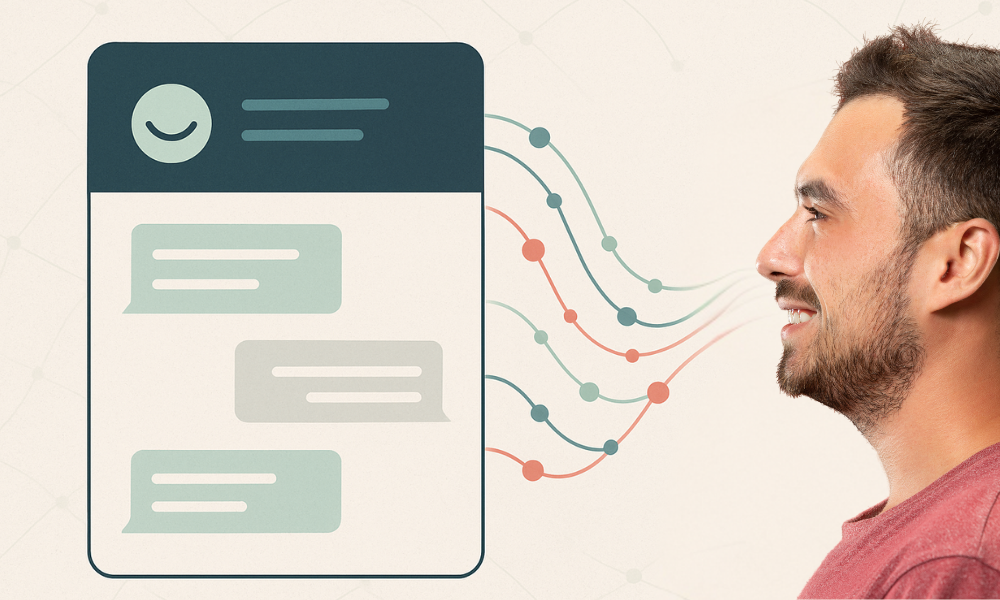Once seen as little more than glorified FAQ machines, AI virtual assistants (VAs) have evolved into powerful partners for membership teams. The new generation of AI-powered assistants doesn’t just answer questions – they help shape meaningful, personalised member experiences at scale. And for membership organisations facing pressure to do more with less, that’s a game-changer.
This article explores the shift from rule-based bots to intelligent assistants – and why now is the time for membership leaders to start planning for autonomous, human-centred engagement.
From scripts to conversations: the evolution of the VA
The first generation: rule-based chatbots
The earliest virtual assistants were… not that helpful. Models like the famous 1966 ELIZA chatbot could simulate conversation, but only by sticking rigidly to a set of rules. Today’s equivalents – still used in many contact centres – rely on keywords and pre-defined conversation trees. They’re fast and predictable, but limited to handling a narrow range of enquiries: order statuses, booking confirmations, basic FAQs.
They get the job done – but they can’t think, adapt, or empathise.
The shift: conversational AI and large language models
That changed in 2021 with the rise of generative AI and the emergence of Large Language Models (LLMs). Built on advances in natural language processing and neural networks, these models (like ChatGPT and GPT-4o) are trained on vast datasets and designed to mimic human conversation.
The difference isn’t just technical – it’s experiential:
- Contextual intelligence: LLMs can hold multi-turn conversations, remember context, and follow complex lines of enquiry.
- Emotional resonance: They’re capable of producing responses that feel genuinely warm, supportive, and human – a key ingredient for member relationships.
For member-based organisations, that shift is profound. It means you can offer intelligent, conversational support around the clock – not just reactive service, but proactive, personalised assistance that feels like a real extension of your team.
Practical magic: where AI-powered assistants create real member value
This isn’t just about futuristic tech. It’s about solving today’s problems in smarter ways. Here’s where virtual assistants are already making a measurable difference:
1 Personalised, relevant communication
AI can analyse member interests, demographics, and behaviours to tailor messages that cut through the noise. Instead of sending one-size-fits-all newsletters, you can deliver targeted content, event invites, and updates that feel individually relevant – even to thousands of members.
2 Always-on, real-time support
24/7 virtual assistants can manage routine queries – renewals, event info, CPD tracking – instantly, without adding to your team’s workload. That improves member satisfaction and reduces churn, especially among younger or digital-native segments who expect instant answers.
3 Predictive insights for retention
By spotting patterns in member behaviour, AI tools can identify early signs of disengagement. That allows your team to intervene early – with targeted re-engagement campaigns or personalised outreach – before members hit the exit.
4 Smarter events and learning journeys
Virtual assistants can recommend content, events, and CPD opportunities based on individual preferences and past behaviour – making it easier for members to engage meaningfully, not just sporadically.
5 Real-time feedback and sentiment analysis
AI can help you make sense of the feedback mountain – scanning surveys, social media, emails – to surface themes, detect frustration early, and act faster. That turns insight into action, without drowning your team in data.
But first, the caveats: implementation challenges and ethical guardrails
Of course, this technology isn’t magic. And it certainly isn’t plug-and-play. To succeed, VAs must be implemented with care – balancing innovation with trust, and automation with transparency.
Technical and reliability risks
- Hallucinations: LLMs can sometimes generate convincing but inaccurate responses. A “human-in-the-loop” approach is essential, especially in sensitive contexts.
- Bias: AI models inherit bias from their training data. Human oversight is crucial to ensure fair, inclusive outputs.
- Warmth vs. accuracy: Prioritising warmth can sometimes make models more agreeable – even when they’re wrong. Striking the right balance is key.
Cultural and operational challenges
- Staff buy-in: There’s real anxiety around automation. It’s vital to frame AI as an enabler – relieving teams of repetitive tasks and unlocking time for high-impact work.
- Training the assistant: VAs need to be taught your tone, values, and context. It’s more cultural than technical – success depends on how well the VA reflects your organisation.
- Transparency: Members must know when they’re talking to a bot – and be able to switch to a human when needed. Clear governance and data privacy standards must be in place from day one.
Planning for autonomous engagement
The opportunity here isn’t just efficiency – it’s transformation. Done well, AI-powered virtual assistants can become core contributors to member engagement, retention, and satisfaction.
But the key is integration. A VA isn’t a standalone tool. It works best when embedded into your existing systems, backed by clear processes, and aligned to your wider strategy.
And above all, it works best when humans stay in the loop.
The real power of virtual assistants isn’t automation – it’s anticipation. When we use them to understand and serve members more personally, we turn every interaction into an opportunity to build trust. – Agentic Consulting
Final thoughts: the case for action
Membership organisations don’t need to wait for perfect tech or unlimited resources. The tools are already here – and the early adopters are building competitive advantage.
So the real question isn’t Can we afford to do this? It’s: Can you afford to be left behind?
Start small. Pick one use case. Get support. And most importantly – bring your people with you.




